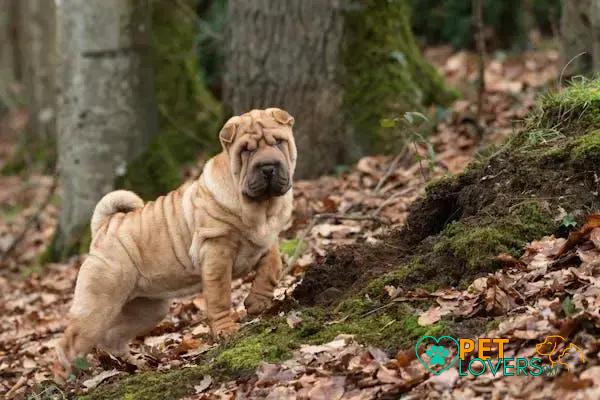Curiosities about the Shar Pei are abundant and fascinating. This breed, known for its wrinkled skin and distinctive appearance, offers a wealth of interesting facts. In this article, we will explore the unique features, historical background, and essential care tips for Shar Pei owners. Whether you’re a current owner or considering adding a Shar Pei to your family, these insights will captivate you.
The Unique Features of the Shar Pei
Wrinkles and Skin
The Shar Pei is well-known for its distinctive wrinkles. These folds of skin are most prominent in puppies, gradually smoothing out as they mature. The wrinkles give the Shar Pei its unique look and are often a defining characteristic.
Blue-Black Tongue
Another unique feature is their blue-black tongue, a trait they share with only one other breed, the Chow Chow. This pigmentation extends to their gums and can sometimes be seen on their eyelids.
Hippopotamus Head
The Shar Pei has a broad, flat head, often described as a ‘hippopotamus head’ due to its shape. This gives the breed a unique facial structure that sets it apart from other dogs.
Snub Nose
Shar Peis possess a distinctive snub nose, contributing to their unique appearance. This feature can make them prone to breathing difficulties in extreme weather conditions.
Small, Sunken Eyes
The breed has small, almond-shaped eyes that appear sunken. This gives the dog a somewhat stern expression but can sometimes lead to eye problems.
Corkscrew Tail
The tail of a Shar Pei is also quite unique, curling tightly over the back in what is often referred to as a corkscrew shape. This tail type adds to the breed’s overall distinct look.
Features Summary
The Shar Pei’s combination of wrinkles, a blue-black tongue, and a hippopotamus-shaped head makes it easily recognizable. Its unique physical traits are not just visually striking but also contribute to its overall health and care needs.
Historical Background of the Shar Pei
The Shar Pei breed boasts a long and rich history that dates back over two thousand years. Originating in China, they were initially bred for various purposes including hunting, herding, and later, as guard dogs due to their protective nature.
The famous wrinkled skin of the Shar Pei was intentionally developed. The folds make it difficult for any attacker to grasp them easily, providing an advantage during conflicts.
The breed almost went extinct during the Chinese Communist Revolution. Fortunately, thanks to dedicated breeders in Hong Kong and Taiwan, the Shar Pei population began to recover in the mid-20th century.
In 1978, the Shar Pei was even listed in the Guinness World Records as one of the rarest dog breeds. It was around this time that international interest surged, and more effort was put into preserving the breed.
Caring for a Shar Pei: What You Need to Know
Grooming is a critical part of caring for a Shar Pei. Their unique wrinkles can harbor bacteria, so be sure to clean and dry them regularly. To prevent skin infections, check their skin folds frequently.
Feeding your Shar Pei a balanced diet is essential. Consult with your vet to choose the right food that matches their age, weight, and health condition. Fresh water should always be available.
Exercise
Shar Peis have moderate energy levels. Daily walks and occasional play sessions will keep them healthy. However, avoid strenuous activities during hot weather, as their tight skin makes them prone to overheating.
Health Checks are crucial for Shar Peis. Due to their genetics, they can be prone to certain health issues such as hip dysplasia and entropion. Regular vet check-ups and early detection are key to managing these conditions.
Shar Peis require socialization from a young age to avoid behavioral problems. Expose them to different environments, people, and other animals in a controlled manner. This practice will help in developing a well-rounded and confident dog.

